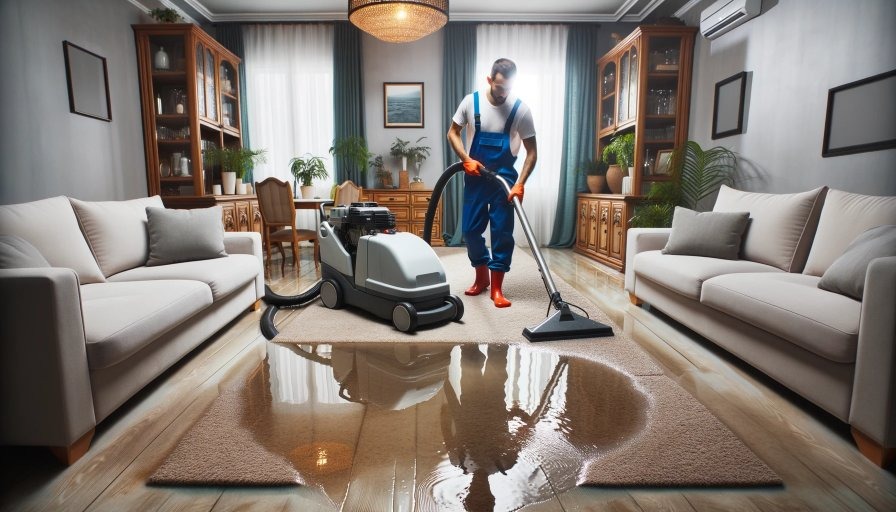Introduction
Water, a fundamental element for life, can also pose a significant threat when it infiltrates our homes. Whether it’s a burst pipe, a leaky roof, or a natural disaster like flooding, water damage is an unfortunate reality for many homeowners. In these challenging times, understanding the ins and outs of water damage repair becomes crucial. This comprehensive guide aims to shed light on the importance of water damage repair, the steps involved, and preventive measures to safeguard your home.
Understanding Water Damage
Water damage can manifest in various ways, from small leaks to major flooding incidents. Recognizing the signs and understanding the different types of water damage is essential for effective repair. Water damage is commonly categorized into three classes:
Class 1: Minimal damage with only a small area affected.
Class 2: Larger areas affected, with faster evaporation, involving carpets and cushions.
Class 3: The most severe class, with water absorption affecting ceilings, walls, and floors.
The urgency of repair depends on the class and category of water damage. Acting promptly is crucial to prevent further harm and mitigate long-term consequences.
Immediate Response: The First Steps
When faced with water damage, immediate action is paramount. The first 24 to 48 hours are critical in minimizing the extent of the damage and preventing secondary issues like mold growth. Here are the initial steps to take:
Assessment: Evaluate the extent of the water damage. Identify affected areas and determine the source of the water to prevent further damage.
Water Extraction: Remove standing water using pumps and vacuums to halt the saturation of materials.
Drying: Utilize professional-grade drying equipment, including dehumidifiers and high-powered fans, to expedite the drying process.
Documentation: Take photographs and document the damage for insurance claims.
The Repair Process
Water damage repair is a multi-faceted process that demands a systematic approach to ensure a thorough recovery. Let’s explore the key stages of the repair process:
Assessment and Inspection: Begin with a comprehensive assessment of the water damage. Professionals inspect affected areas, identify the water source, and categorize the damage based on its class and category.
Water Removal and Extraction: Specialized equipment, such as pumps and wet/dry vacuums, is employed to remove standing water efficiently. Swift extraction helps prevent further damage and accelerates the repair process.
Drying and Dehumidification: After water removal, the drying process commences. Industrial-grade dehumidifiers and powerful air movers are strategically placed to eliminate moisture from the air and affected surfaces, mitigating the risk of mold growth.
Cleaning and Sanitizing: Once the affected areas are dry, thorough cleaning and sanitization are crucial. This step involves removing contaminants and applying antimicrobial agents to prevent bacterial growth.
Repair and Restoration: The final stage focuses on restoring the property to its pre-damage condition. Depending on the severity of the damage, repairs can range from minor fixes like replacing drywall to more extensive renovations. The goal is to create a safe and habitable living space.
Challenges in Water Damage Repair
While the repair process may seem straightforward, several challenges can complicate the restoration efforts:
Hidden Damage: Water can seep into concealed spaces within walls, floors, and ceilings, leading to hidden structural damage. Professionals use advanced moisture detection tools to identify these hidden issues.
Mold Growth: Mold can start to grow within 24 to 48 hours of water exposure. Repair experts must address any mold growth promptly to prevent health hazards and further damage to the property.
Electrical Hazards: Water and electricity are a dangerous combination. The risk of electrical hazards increases in water-damaged areas, requiring repair professionals to take precautions to ensure a safe working environment.
Insurance Claims: Navigating the complexities of insurance claims can be challenging. Repair companies often work closely with insurance providers to streamline the claims process for homeowners.
Preventive Measures to Avoid Water Damage
While water damage repair is essential, taking preventive measures can save homeowners from the stress and expense of dealing with water damage in the first place. Consider the following tips:
Regular Maintenance: Conduct routine inspections of your home to check for leaks, damaged roofs, and faulty appliances. Addressing minor issues promptly can prevent them from escalating into major problems.
Proper Insulation: Ensure your home is adequately insulated, especially in vulnerable areas like basements and attics. Proper insulation helps regulate temperature and prevent condensation, reducing the risk of water damage.
Secure Roofing: Regularly inspect your roof for damaged shingles or leaks. Timely repairs can prevent water from entering your home during heavy rain or storms.
Proper Ventilation: Ensure proper ventilation in areas prone to moisture, such as bathrooms, kitchens, and basements. Good ventilation helps reduce humidity and prevents the growth of mold.
Conclusion
Water damage repair is a vital service that plays a crucial role in restoring homes affected by water-related incidents. Understanding the significance of immediate action and the comprehensive nature of the repair process is essential for homeowners facing such challenges. By taking preventive measures and addressing water damage promptly, individuals can protect their homes and minimize the impact of unforeseen water-related incidents. In the face of adversity, water damage repair professionals stand ready to restore not just homes but the peace of mind of those affected by water-related disasters.

